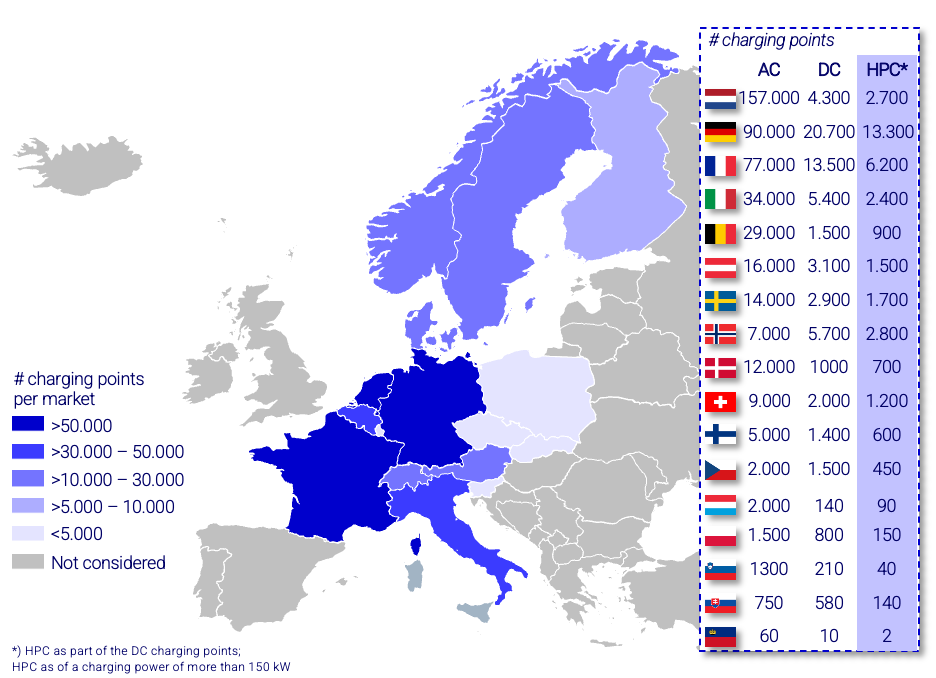EV charging stations solutions are not evenly distributed across Europe. Countries like Norway, the Netherlands, and Sweden have the highest density of charging stations per capita, while countries like Bulgaria, Romania, and Lithuania have the lowest density per capita. Germany is expected to have the most charging stations by 2024, with more than 950,000 planned, followed by France with 600,000. This is thanks in part to government incentives to support the development and installation of charging stations. As electric vehicle use continues to increase, more countries are expected to turn to alternative modes of transportation and invest in charging infrastructure.

The German government aims to have 1,000,000 fully accessible and operational charging stations by 2030.
Germany needs to work with China to achieve its 2030 electric vehicle goals
"If you want to achieve your climate goals and secure Germany's position in the automotive industry in the long term, you have to work with Chinese companies and advocate for a rapid increase in the adoption of electric vehicles," said Christian Hochfeld, head of the think tank.
The regions with the most charging stations in Germany are Bavaria (26,073), North Rhine-Westphalia (23,620) and Baden-Württemberg (22,910). Together, these states have more than half of the country's charging stations. The leading supplier is EnBW, followed by E.On and Tesla. Germany's goal is to have one million charging stations by 2030.
Last, I would like to talk about our newly 50kw@1500Vdc charging module.
This module is designed with high power, high efficiency and high output voltage, which can be used in Mining charging and heavy electric car charging that requires high voltage charging.
It will also be a good option for HPC (High power charging).
Save cost-with manufacturer direct pricing
Control quality-with strict quality control and testing
Save time-with experienced team to get project done